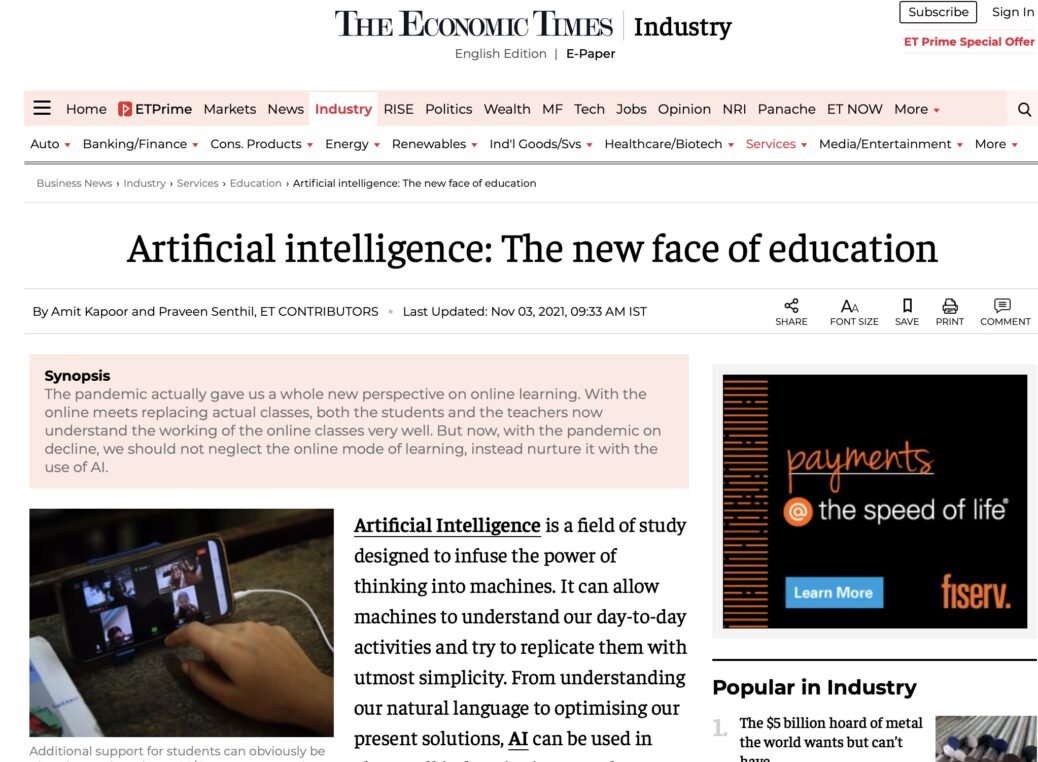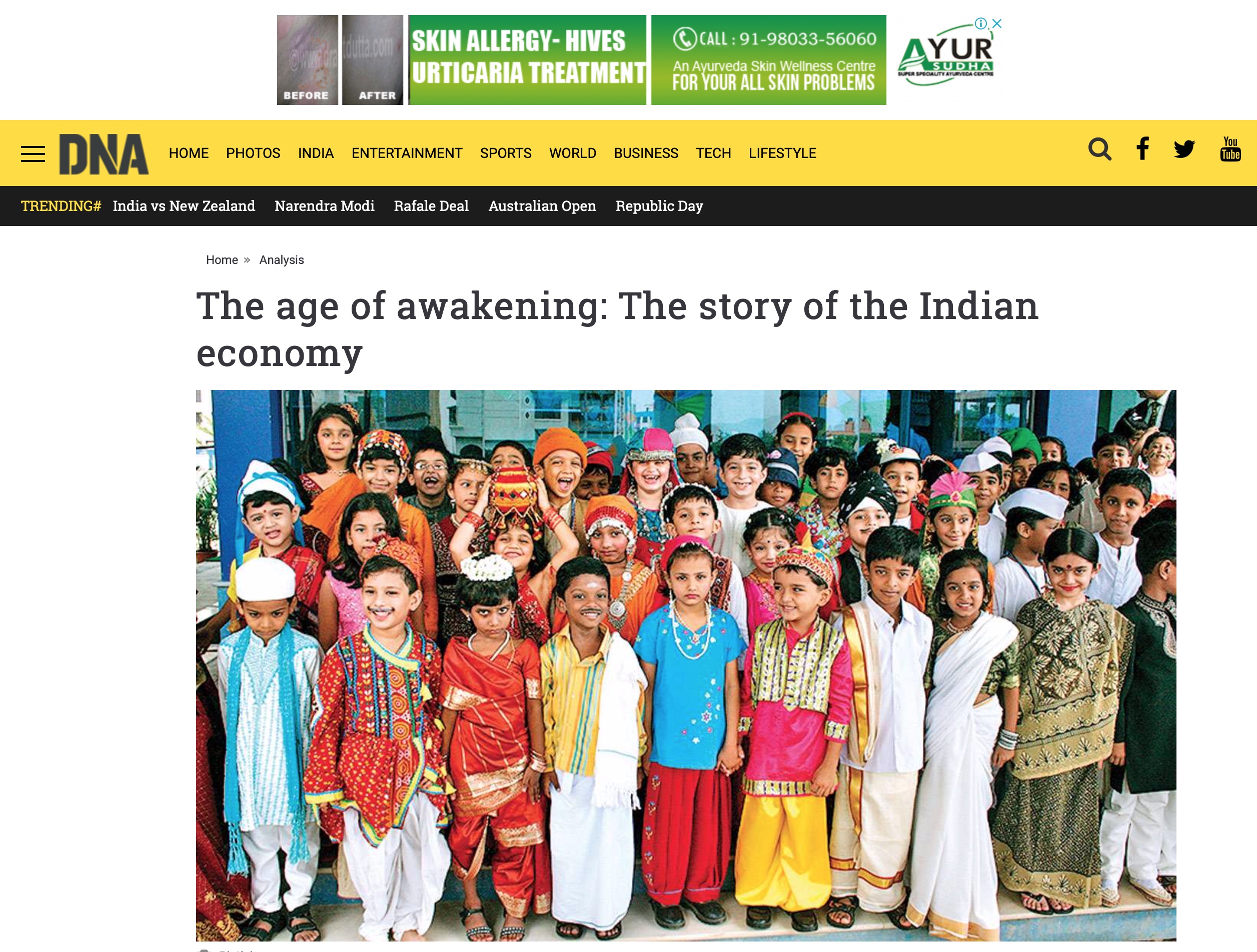The pandemic actually gave us a whole new perspective on online learning. With the online meets replacing actual classes, both the students and the teachers now understand the working of the online classes very well. But now, with the pandemic on decline, we should not neglect the online mode of learning, instead nurture it with the use of AI.
Artificial Intelligence is a field of study designed to infuse the power of thinking into machines. It can allow machines to understand our day-to-day activities and try to replicate them with utmost simplicity. From understanding our natural language to optimising our present solutions, AI can be used in almost all industries in general. In general, AI entails taking aspects of human intellect and applying them as algorithms in a computer-friendly manner. The output of AI is present in the form of text-to-speech services and voice assistants, which can simplify the easiest of tasks, such as calling or even texting someone. Such a versatile tool, AI is set to dominate the world’s leading industries. As a result, AI must investigate how the human mind ‘thinks, develops, and makes decisions’ when attempting to resolve issues or carry out a project. The goal of AI is to advance technology by including functions related to human behaviours such as reasoning, learning, and problem-solving.
AI in schools
AI is already a part of host of different ecosystems such as hospitals, factories and scientific laboratories etc., but the most striking use of AI is in the business arena; from our super-fast food delivery apps to our responsive cab drivers, most of these latest services are integrated with AI. But, the notion of AI in schools is often overlooked. It is usually thought of replacing teachers and appointing some “boring robots”. But what exactly needs to be made is a system, where teachers and online bots can coexist, and create learning personalized for each student. Personalised learning refers to giving each student, a unique experience of learning, which supposedly begins with their doubts and queries being resolved, and then focusing on improving their academic performance.
Back in the day, when Google, the search engine, was introduced, it identified the ‘keywords’, used for the query, and then displayed the results, which matched with the keywords. But, the latest software’s (voice assistants, mainly) use the identification and processing of ‘intents’, which is a much more effective and a smarter solution. With this principle and methodology in mind, we can move ahead and look at the use of AI in this “budding” sector. Similar to the principle behind voice assistants, if we can find the intention of the query of a particular student, that is half battle won. With that said, identifying the lesson or sub-topic, from which the question is being asked is of paramount importance. Then, the assistant (either voice or chat) can be loaded with solutions, of some of the major subtopics and concepts, which should cover the major part of the query. In case the query is a bit ‘out of the box’, we can tackle it by using a closure statement, which should also include useful links and documents, to help them solve their queries. Since we are talking about a digital extension to classrooms, we can include some external links to videos or even notes for the chapter, for the students to clarify it as much as they can by themselves. Additional support for students, can obviously be given by teachers, but a 24/7 system, can work miracles, at the time of need. A real-life example, for such a system is an application called Socratic, developed by Google LLC. It can help students answer and solve problems, much like our hypothetical solution does, but Socratic has AI integrated in it in the form of an image-to-text service. In simple words, a student can click and search for a question, and the software can perceive the text in the image, and can also deliver the solution for the problem within seconds. Socratic also provides detailed description of the solution, and also a load of extra material that the students can make use of. If we can put such a smart software into work, along with an atmosphere of several Indian languages, we can reach out to a huge number of students, who can benefit from this application.
The pandemic actually gave us a whole new perspective on online learning. With the online meets replacing actual classes, both the students and the teachers now understand the working of the online classes very well. But now, with the pandemic on decline, we should not neglect the online mode of learning, instead nurture it with the use of AI. Online classrooms, if permanent, can easily result in the improvement of grades as well as the understanding of concepts, and can also act an additional platform, which they can look into, whenever needed. Though these are just some ideas and ways of utilising our resources to the best, we still have a long way to go, as far as developing AI technologies in India is concerned. It is not something that just sits in Tony Stark’s lab, and can simulate time travel, it is something that requires days and months to be developed, and even years to be implemented in each and every corner of our country.
The article was published with Economic Times on November 7, 2021.























